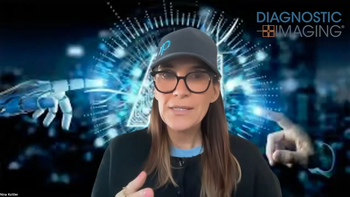
Radiologists Should Be Proactive with Patient Engagement
Radiologists should be more active in delivering medical imaging test results to patients, so the public can be more aware of radiologists' role in health care.
Radiologists should consider being more active in
Traditionally, radiologists send their findings and recommendations to the ordering physicians, who then relay these to the patients, leaving the radiologists in the background. “As radiologists, we need to reevaluate the established model of communication for reporting radiology results and consider the positive impact on patient care, and on the vitality of the radiology profession, of directly communicating with patients,” wrote the authors of a study published in the June issue of Academic Radiology.
According to survey findings from 237 patients who underwent CT and/or MRI exams, 77 percent said that if the test results were abnormal, they wanted to hear this from their ordering physician, with only 12 percent saying they would like to get the results from a radiologist and 11 percent from their primary care physician.
Other study findings were:
- 73 percent of all patients surveyed indicated that they didn’t care who gave the results if they were able to get the results as quickly as possible;
- 64 percent of patients surveyed would like to receive the results from or at least meet the radiologist;
- If the exam results were normal, 41 percent would prefer to get their results in the mail, 9 percent by email or text message, 34 percent by phone, and 16 percent in person;
- For abnormal exam results, 40 percent of the patients would prefer to get the results in person, while 32 percent said by phone was acceptable, and 4 percent said email was acceptable.
The drawback to not meeting with patients to deliver test results is that patients may not see radiologists as part of the healthcare team or even as doctors, researchers found. According to the study:
- 60 percent of patients noted that radiologists were specially trained physicians;
- 36 percent of the patients said that radiologists were the technicians who performed the exams, and 4 percent said that radiologists were registered nurses who were trained to perform radiology exams.
Being a more obvious part of the healthcare team allows the public to learn about how radiologists play an active role in the diagnosis and treatment of disease, researchers said.
Newsletter
Stay at the forefront of radiology with the Diagnostic Imaging newsletter, delivering the latest news, clinical insights, and imaging advancements for today’s radiologists.




























